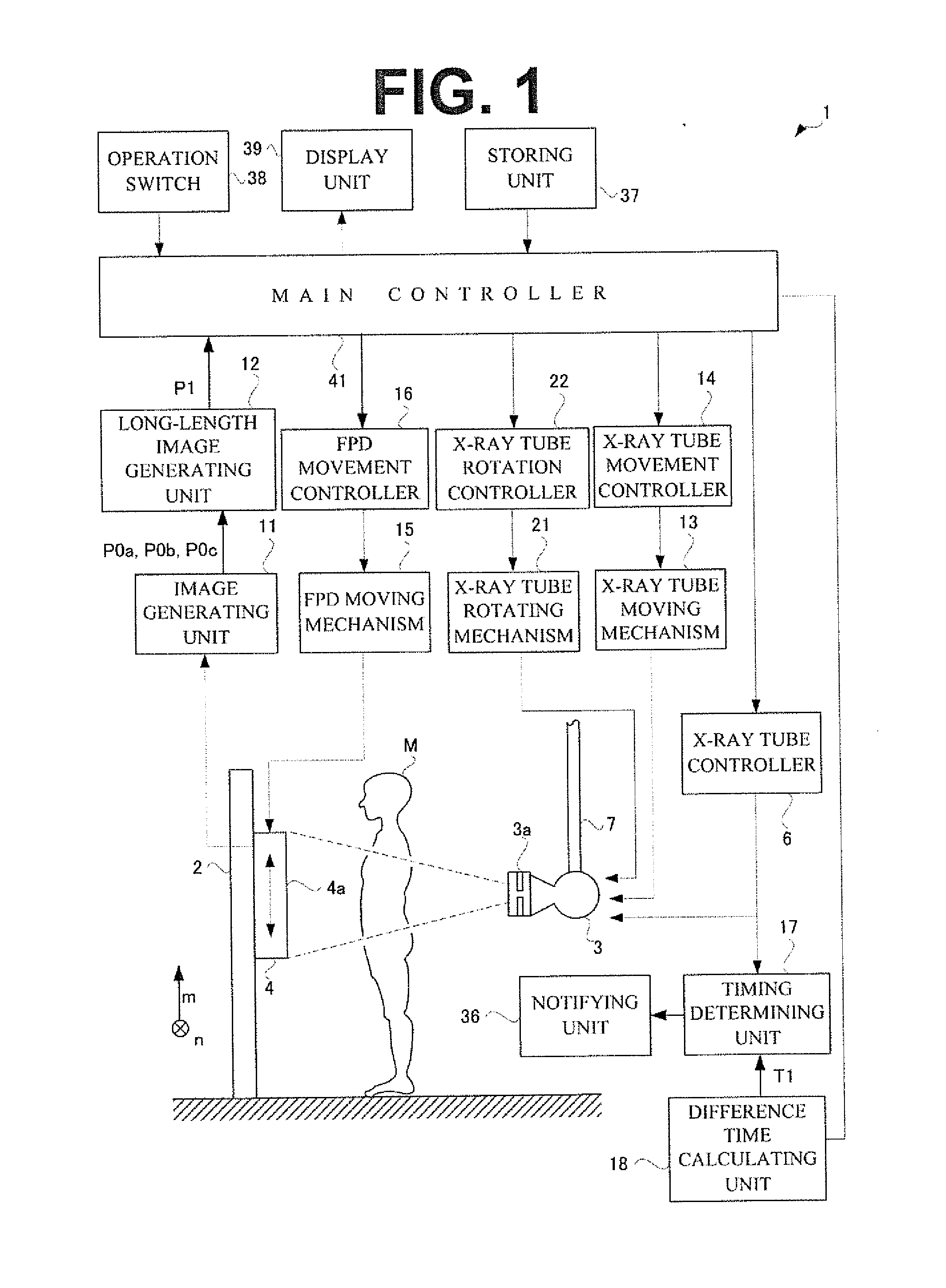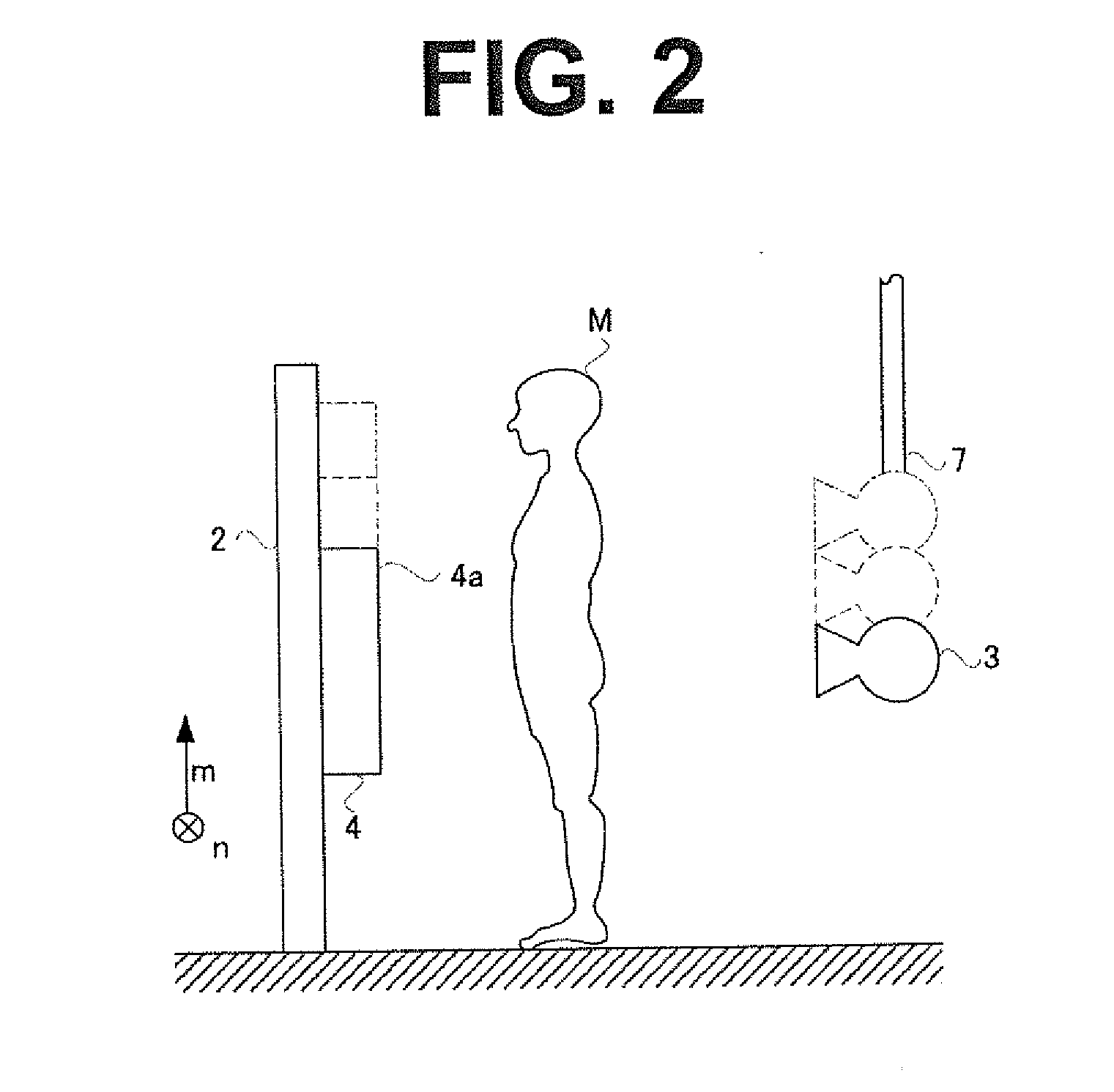Radiographic device
a technology of radiographic devices and figs, applied in the direction of radiation generation arrangements, instruments, applications, etc., can solve the problems of figs at the joint of images, and achieve the effect of reducing excessive load
- Summary
- Abstract
- Description
- Claims
- Application Information
AI Technical Summary
Benefits of technology
Problems solved by technology
Method used
Image
Examples
embodiment 1
Effect of Embodiment 1
[0079]The following describes an effect by the timing determining unit 17 configured as mentioned above. FIG. 8 illustrates a conventional configuration. In the conventional configuration, an instruction to activate the X-ray tube 3 is displayed at time when the non-detectable time period of the FPD 4 ends. Accordingly, the operator activates the X-ray tube 3 after the non-detectable time period of the FPD 4 ends. The following is revealed from comparison between FIG. 8 and the upper of FIG. 4 illustrating Embodiment 1. That is, in Embodiment 1, the FPD 4 that does not allow detection of X-rays is restored simultaneously with the activation of the X-ray tube 3. In contrast to this, in the configuration illustrated in FIG. 8, the operations are performed in series. As noted above, Embodiment 1 achieves shorter time necessary for the posterior X-ray emission after the anterior X-ray emission than that in the conventional manual mode.
[0080]The following describes ...
embodiment 2
Effect of Embodiment 2
[0101]The following describes an effect by the timing determining unit 17 configured as mentioned above. FIG. 12 illustrates a conventional configuration. The following is revealed from comparison between FIG. 12 and FIG. 9(A) illustrating Embodiment 2. That is, in Embodiment 2, the X-ray tube 3 is in a rest state during X-ray emission. In contrast to this, in the conventional automatic mode in FIG. 12, the X-ray tube 3 is always in an activated state once the successive imaging is activated. Accordingly, in the conventional automatic mode, the filament in the X-ray tube 3 is always kept at high temperatures, causing ready damages on the filament. As noted above, Embodiment 1 achieves a longer life of the X-ray tube 3 than in the conventional type.
[0102]The other configuration of the X-ray apparatus 1 in Embodiment 2 is equal to that in Embodiment 1, and thus description thereof is to be omitted.
[0103]The following describes how the long-length radiography is a...
PUM
 Login to View More
Login to View More Abstract
Description
Claims
Application Information
 Login to View More
Login to View More - R&D
- Intellectual Property
- Life Sciences
- Materials
- Tech Scout
- Unparalleled Data Quality
- Higher Quality Content
- 60% Fewer Hallucinations
Browse by: Latest US Patents, China's latest patents, Technical Efficacy Thesaurus, Application Domain, Technology Topic, Popular Technical Reports.
© 2025 PatSnap. All rights reserved.Legal|Privacy policy|Modern Slavery Act Transparency Statement|Sitemap|About US| Contact US: help@patsnap.com



